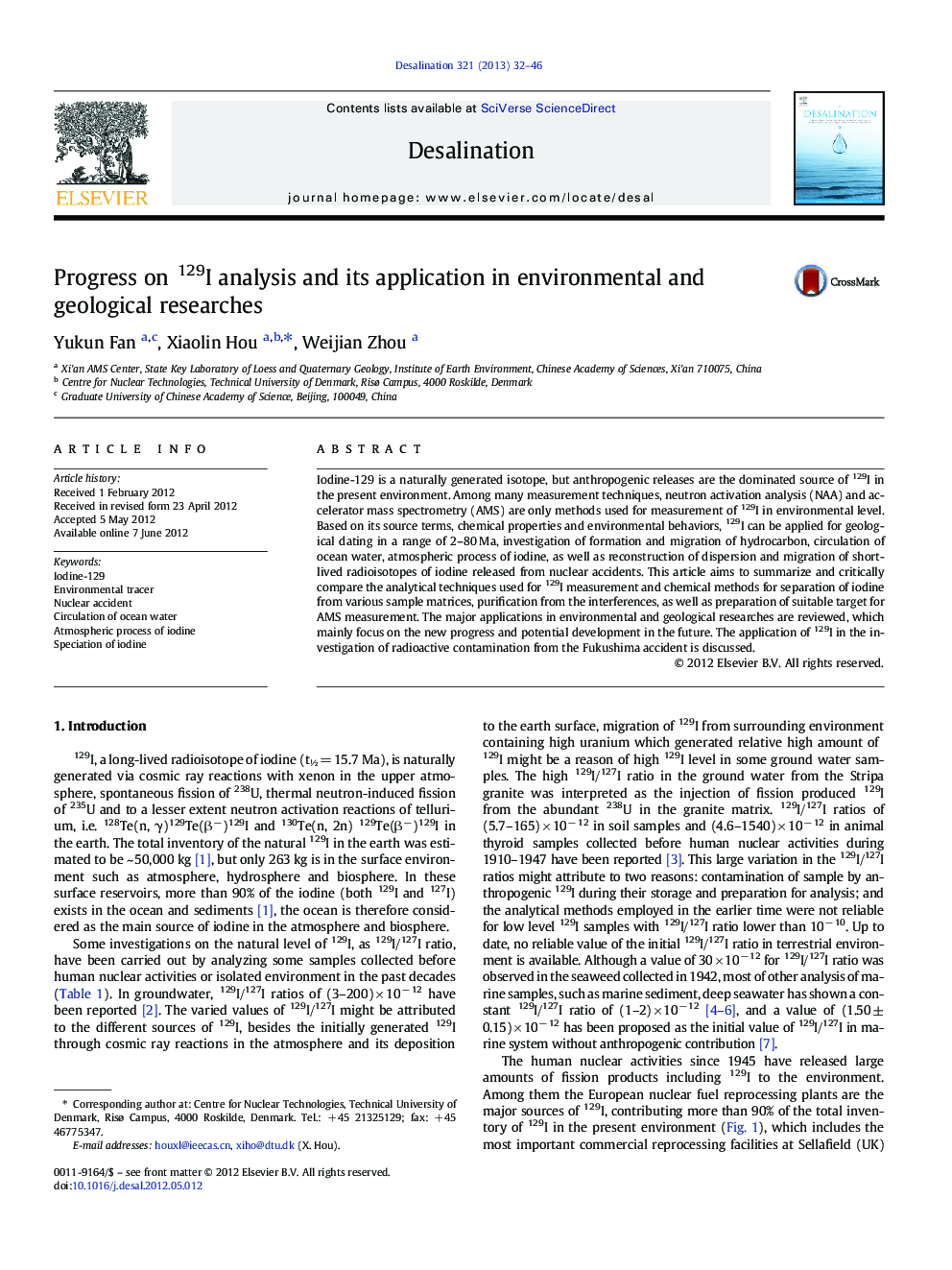| Article ID | Journal | Published Year | Pages | File Type |
|---|---|---|---|---|
| 623870 | Desalination | 2013 | 15 Pages |
Abstract
Iodine-129 is a naturally generated isotope, but anthropogenic releases are the dominated source of 129I in the present environment. Among many measurement techniques, neutron activation analysis (NAA) and accelerator mass spectrometry (AMS) are only methods used for measurement of 129I in environmental level. Based on its source terms, chemical properties and environmental behaviors, 129I can be applied for geological dating in a range of 2-80Â Ma, investigation of formation and migration of hydrocarbon, circulation of ocean water, atmospheric process of iodine, as well as reconstruction of dispersion and migration of short-lived radioisotopes of iodine released from nuclear accidents. This article aims to summarize and critically compare the analytical techniques used for 129I measurement and chemical methods for separation of iodine from various sample matrices, purification from the interferences, as well as preparation of suitable target for AMS measurement. The major applications in environmental and geological researches are reviewed, which mainly focus on the new progress and potential development in the future. The application of 129I in the investigation of radioactive contamination from the Fukushima accident is discussed.
Related Topics
Physical Sciences and Engineering
Chemical Engineering
Filtration and Separation
Authors
Yukun Fan, Xiaolin Hou, Weijian Zhou,
